Road bike vs touring bike: understanding the differences
Explaining the similarities and differences between two very different bikes that look almost identical
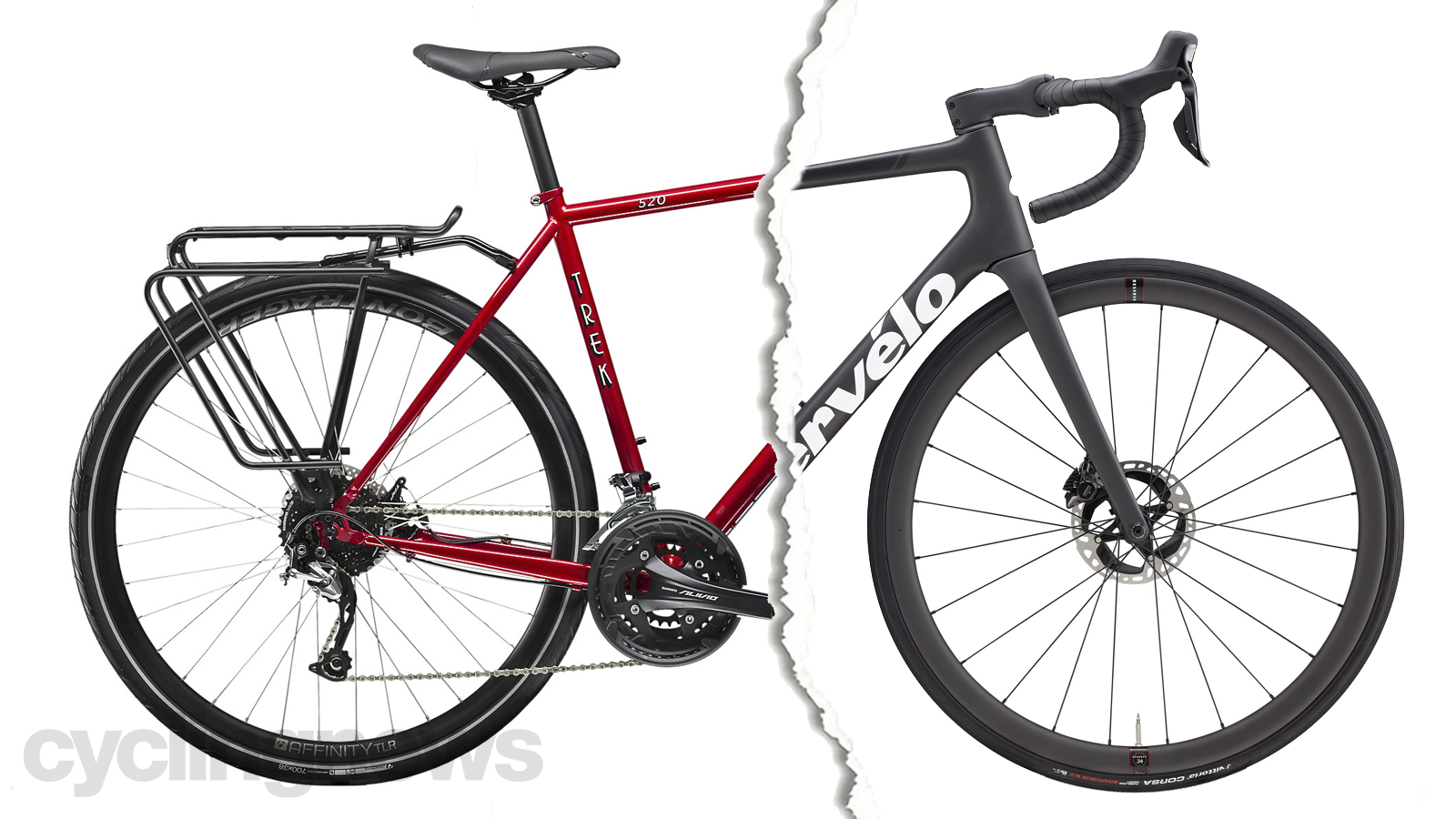
From afar, the best road bikes and the best touring bikes look nearly the same. Both have drop bars, similarly shaped frames, and disc brakes. Even the cassettes look the same, along with the rest of the components. However, road bikes and touring bikes are designed for very different types of riding.
Touring bikes are heavier, stronger, and more robust than road bikes, although it’s hard to tell the difference with an untrained eye. Road bikes are meant to be fast, lightweight, and agile, which are not qualities that anyone would ever use to describe a touring bike. Before diving into more details about the frame, shape, and build of each bike, let’s look at what each frame is actually designed for.
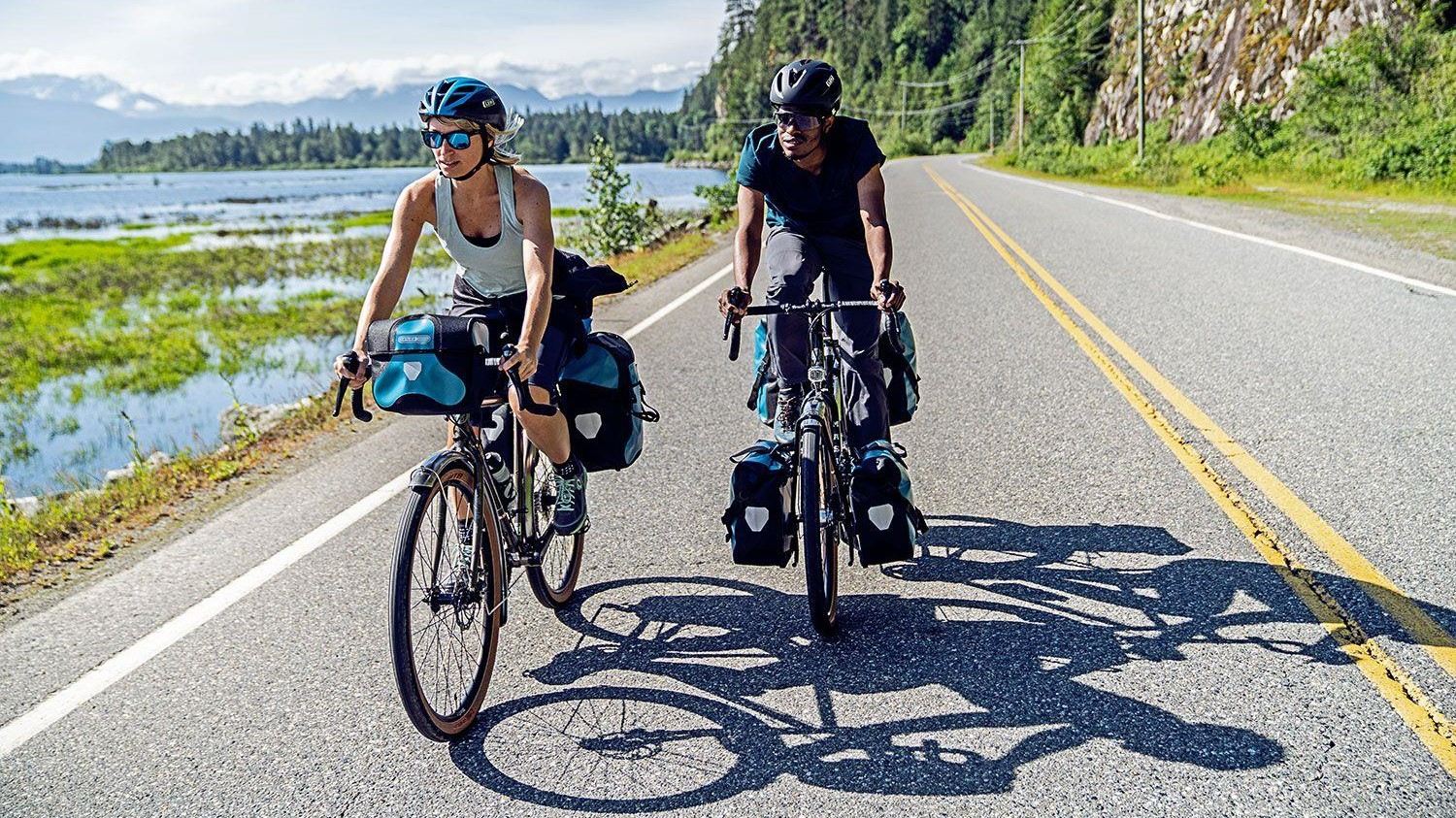
What are road bikes and touring bikes made for?
Road bikes are designed for smooth rides on all sorts of tarmac from small cycle paths to Pyrenean highways. With a lightweight and aerodynamic frame, these bikes are designed for speed. Not all road bikes are designed for racing - for example, the best endurance road bikes feature more relaxed geometry for comfort - but they are always designed to be fast and efficient. Their narrow tyres, shorter stack, and drop bars create a low and aerodynamic riding position.
In contrast, touring bikes are designed for their namesake: touring. They're built for comfort, endurance, and long luggage hauls, with heavier frames that can withstand tough roads, and they are covered in extra mounts for accessories such as water bottles, racks, bags, lights, and mudguards. Powerful disc brakes are at the centre of each wheel, which are almost a necessity on high-speed descents with 20kg of extra luggage weighing down the frame. Wide tyres help cushion the bike against the road, and the frame is shaped in a way that increases comfort, sacrificing aerodynamics.
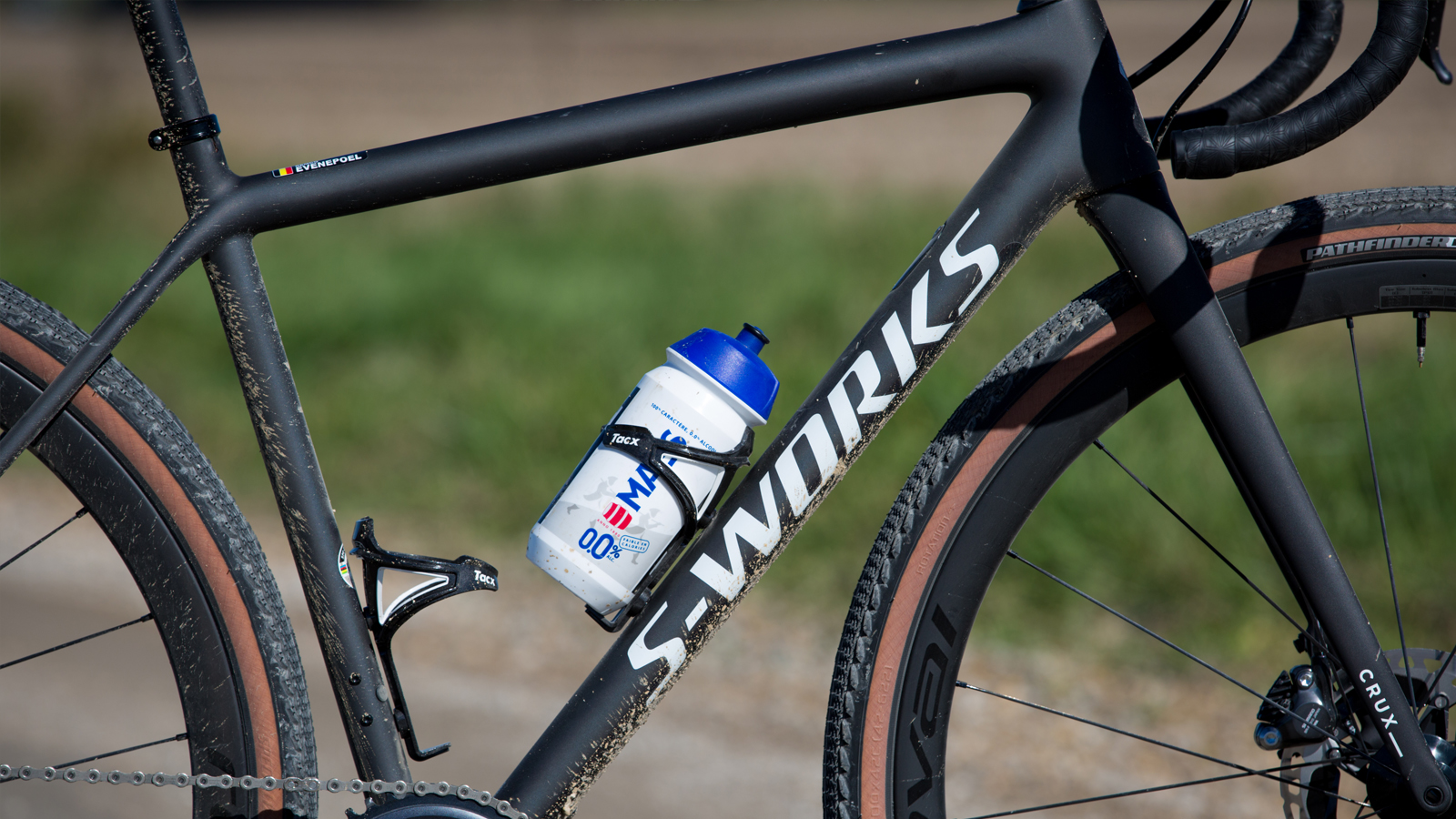
Frame geometry
Compared to touring bikes, road bike geometry puts the rider in a more aerodynamic riding position, enabling them to efficiently pick up speed and maintain it for as long as it's needed. For racing bikes, this often comes at the expense of rider comfort. However, these aren’t the most extreme positions in cycling, as that award goes to time trial bikes.
High-quality road frames are most often made from carbon fibre, which is the lightest material for race bikes. Carbon can be a bit fragile, and you can ruin an entire frame by cracking it in a crash, but the performance benefits are significant - not a single professional cycling team races on non-carbon frames.
Touring bikes are typically made of steel or aluminium, the former being the preferred material for most touring cyclists. Steel is better at absorbing vibrations in the road, rather than transferring the jolt to the rider like an aluminium or carbon frame might do.
Get The Leadout Newsletter
The latest race content, interviews, features, reviews and expert buying guides, direct to your inbox!
In terms of frame geometry, touring bikes typically have a longer wheelbase, longer chainstays, and a lower bottom bracket, to improve comfort and stability for all-day riding. This also increases the distances between your feet and the rear axle. So if you have luggage or panniers hanging over the rear wheel, you won’t need to worry about your foot grazing the luggage during each pedal stroke.
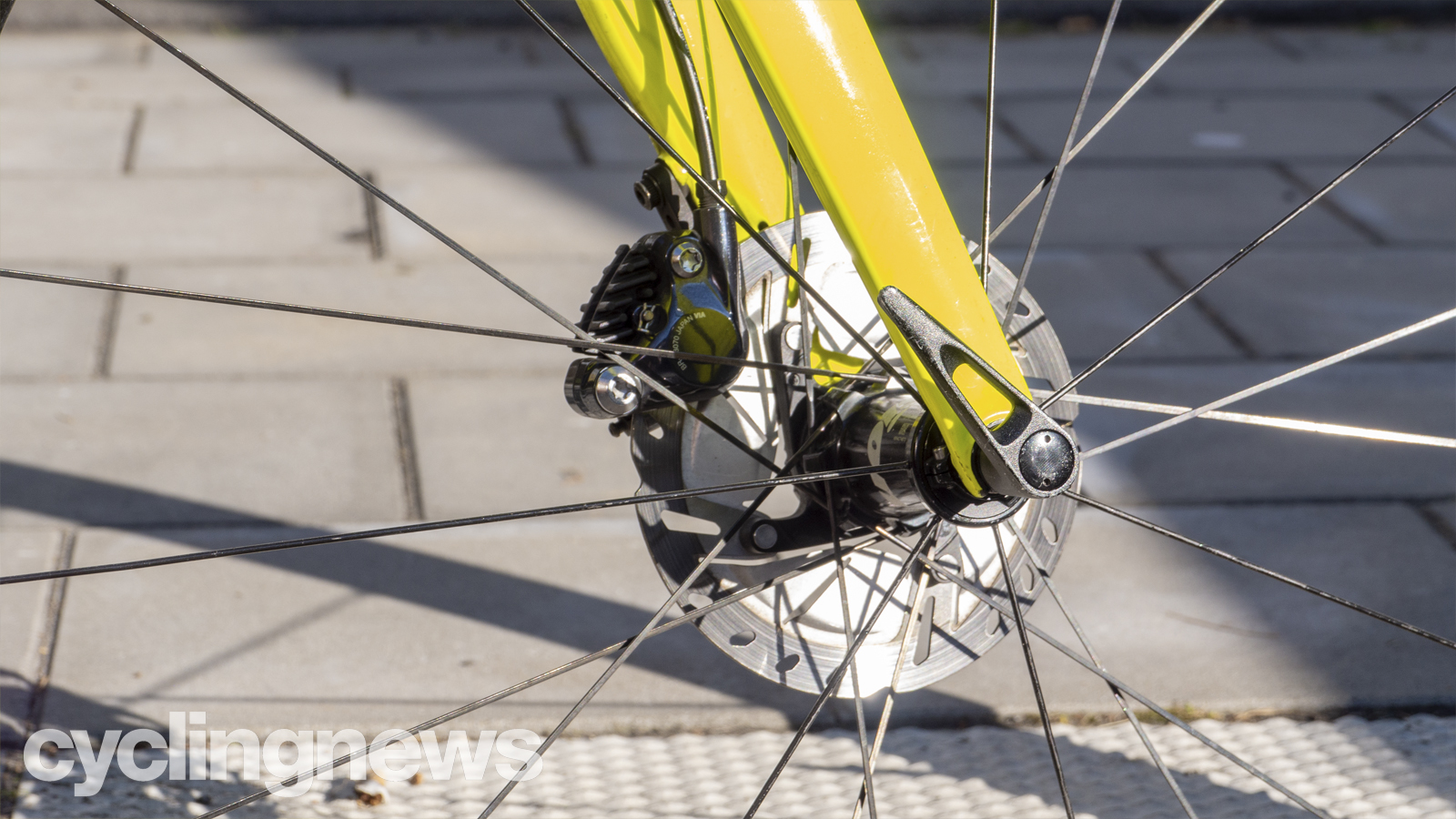
Gears and brakes
These are two of the areas where road bikes and touring bikes are most similar. When it comes to gearing, most road bikes and touring bikes will have a 2x setup, which refers to the number of front chainrings. The most common road setup is a 50/34t, with each number referring to the number of teeth of the chainring. The more teeth at the front, the “bigger” the gear and the harder it is to pedal, and many road cyclists will use chainsets with 52/36 or 53/39 configurations, with even larger being available.
Most road bikes come with an 11-speed rear cassette with cogs from 11t to 28t. This is enough gearing for most riders to sprint at 55km/h and also survive hills with seven-per cent gradients. Riders inclined (pun intended) to tackle greater climbs and steeper gradients will use even bigger cassettes such as an 11-32, with the larger 32-tooth sprocket at the rear requiring less force to turn.
Touring bikes have similar gearing setups. With a significantly heavier frame and luggage weighing you down, your average ride speed on a touring bike will be much lower than your average speed on a road bike. And so many touring riders opt for that compact crankset, with a number of easy climbing gears to get them up the steepest hills.
Sometimes you will find 3x setups (with three front chainrings) for riders tackling the toughest terrain. The third front chainring is even smaller than a 34t, and you’ll be able to keep pedalling at 6km/h in this tiny ‘granny gear.’ You’ll never find a 3x setup on a road bike, but you will find them on some hybrid bikes.
- Road bike vs hybrid bike: Understanding the differences
Both road bikes and touring bikes most commonly include disc brakes which are better-performing and more powerful than rim brakes. However, older road bike models use rim brakes, which are cheaper, lighter, and easier to set up than disc brakes, although they struggle to perform in the wet, especially on carbon rims. Similarly, older touring bikes often rely on cantilever rim brakes, because they require less maintenance and are often easier to fix if you're stuck in the middle of nowhere. Having said that, disc brakes are definitely the most common type found on newer bikes.
Disc brakes are more powerful than rim brakes; they perform well across all weather conditions, and they include a level of modulation. For all performance purposes, disc brakes are superior to rim brakes. Especially with the luggage of a touring bike weighing you down on descents, disc brakes are a must for safe and effective deceleration.
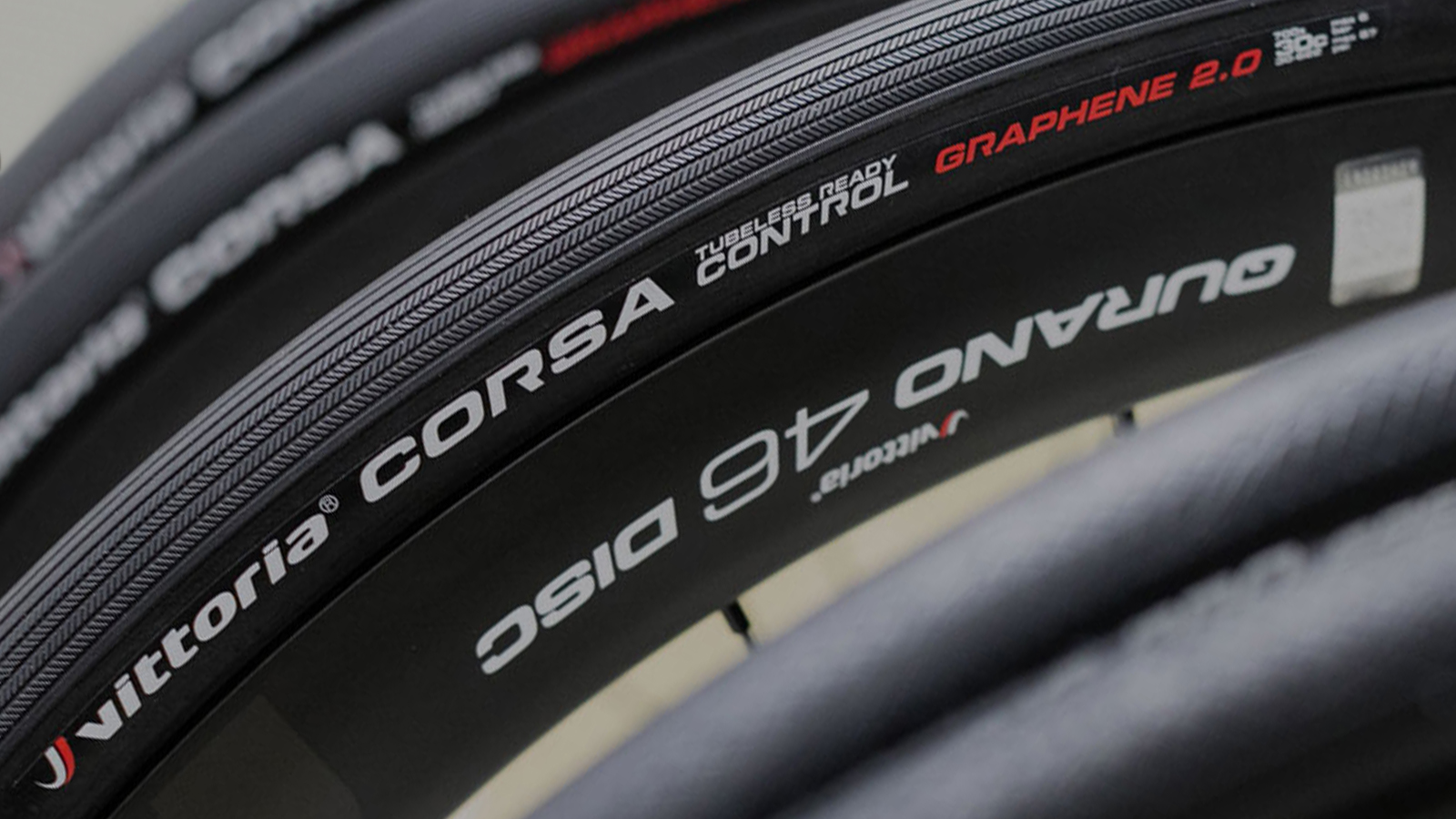
Wheels and tyres
Road bikes used to be limited to narrow and slick tyres, but with an increasing demand to ride off-road, bike manufacturers have redesigned their frames to accept more combinations of the best road bike wheels and best road bike tyres. Road riders can choose from clincher, tubular, and tubeless tyre setups, and find a tyre anywhere from 21-38mm wide. A classic road bike setup will use 25mm or 28mm slick tyres pumped up to 70-90psi, although many riders have begun experimenting with <70psi setups for riding in wet conditions.
Road tyres are often slicks or semi-slicks, which means they have little tread or grooves on the surface of the tyre. Tread is meant to grip the ground, so having less of it results in less rolling resistance and makes it easier to maintain speed. Meanwhile, heavier (or thicker) tread is used for off-road riding such as mud, dirt, sand, and gravel.
While road bikes often have narrow and slick tyres, touring bikes have room for much wider tyres with thicker tread. Even if you’re staying on pavement, you’ll want a wider tyre for touring because of the extra weight of your bike and luggage, as well as decreasing your chance of a puncture.
Specifically, touring bikes have tyres measuring around 32-45mm wide. Wider tyres are typically run at lower pressures too, with a 38mm tyre, for example, needing 45psi to handle most effectively. Most touring bikes these days use tubeless tyres because they are robust, puncture-resistant, and can be run at much lower tyre pressures than clinchers.
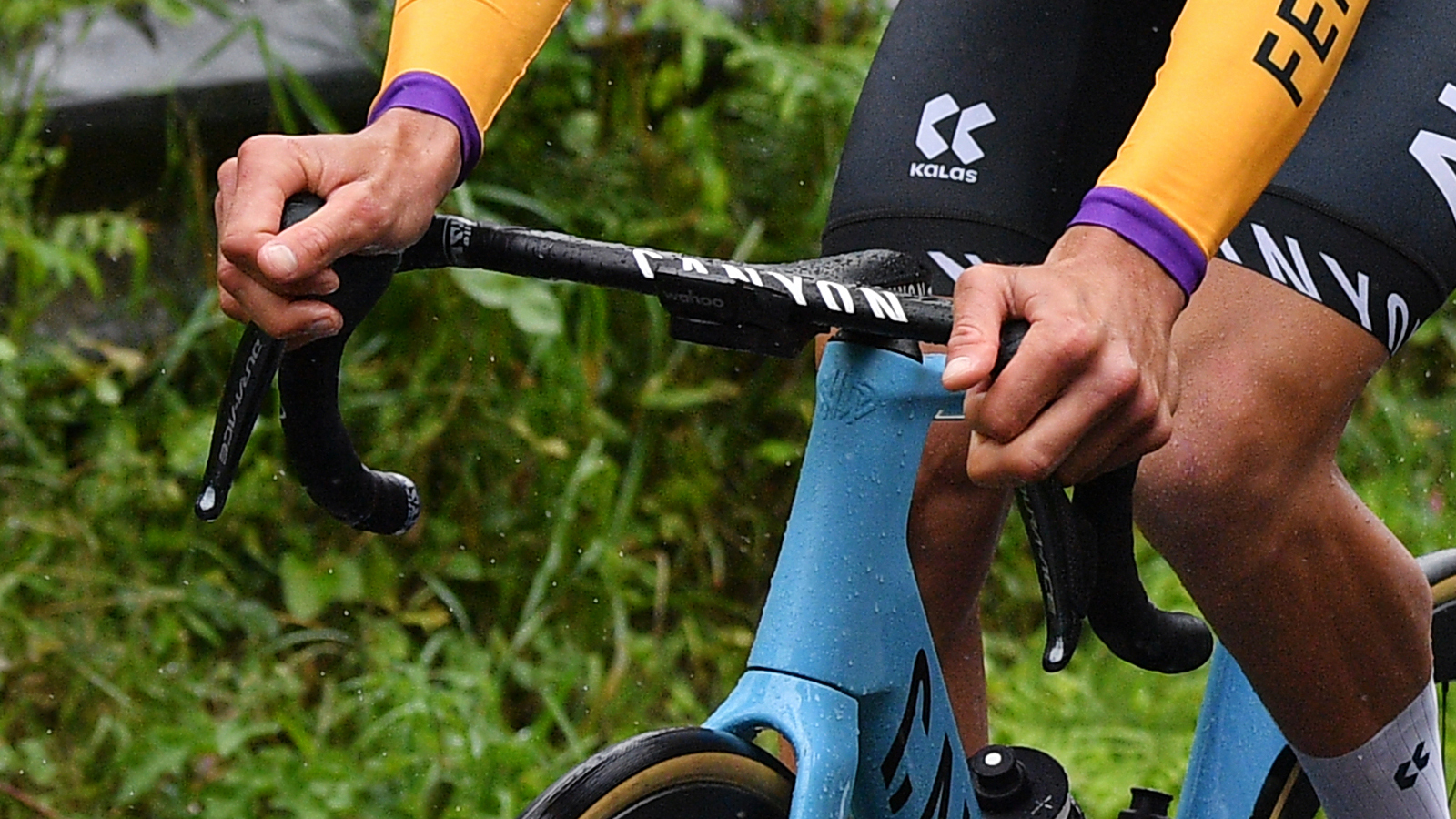
Handlebars
Road bikes use drop handlebars with the shift and brake levers built into one mechanism, which is fitted at the beginning of the curve of each drop, creating a hand-rest position that is level with the ground. This 'hoods' position is the most common hand position for road cyclists, whereas the tops are often used for climbing, and the drops are used for sprinting, time trialling, descending and cornering.
Touring bikes often have drop bars, although they aren’t classic road-style. They're more alike the best gravel handlebars than the best road handlebars, with a wider overall width, and sometimes a flaring of the drops that points them outward. These flared handlebars provide a low and wide grip for rough roads, steep descents, or just a change in hand position. Since you’re going to be in the saddle for hours or days at a time, comfort and pressure relief are high on the priority list.
There is not one universal style of touring bike handlebars, with many riders preferring all sorts of styles from flared drops and butterfly handlebars, to flat bars and everything in between. In general, drop bars are the fastest and most aggressive style of handlebar for a touring bike, while flat bars are the most casual. Drop bars may be the best for experienced cyclists, while flat bars are recommended for beginners.
Another difference in this area has to do with gear shifting. It's common practice for road bikes to have integrated braking and shifting levers, while some touring bikes may instead have friction shifters located either on the bar ends or by the stem. Index shifting, which is found on pretty much all road bikes nowadays, refers to the way a gear cable pulls on the derailleur, with one click of the shifter equating to one shift in gear. Friction shifters on the other hand aren't set up that way. Instead, they offer a more fluid movement, whereby you pull the lever until the chain shifts into place. It takes some getting used to but makes for much easier maintenance and repairs on the road.
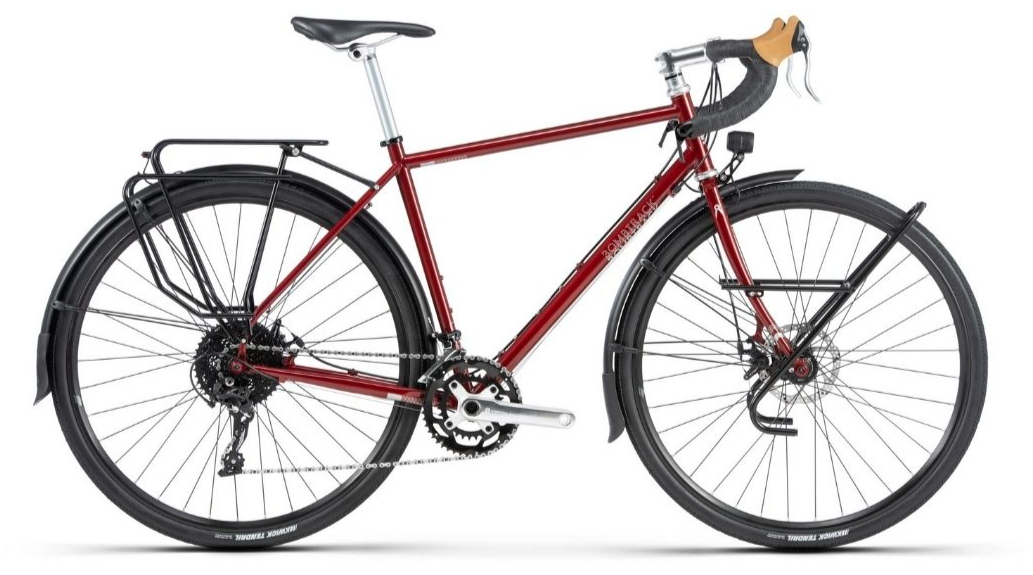
Accessories
One of the biggest differences between road bikes and touring bikes is the mounts for accessories littered around touring bike frames. Road bikes are meant to be sleek, lightweight, and aerodynamic, so carbon frames tend to come with limited accessory mounts. On a touring bike however, there are often mounts on the fork, frame, seat stays, and more for the best bike lights, best mudguards, luggage racks, and the best water bottles.
How to choose
Both road bikes and touring bikes are designed for long road rides, but one is designed for speed and the other for comfort. Road bikes are engineered to be fast in a straight line, quick around corners, and fast up mountains. They are lightweight and aerodynamic, with little room for accessories. While some road bikes aren’t the most comfortable to ride for hours at a time, they are the fastest and most capable bike for road racing and club rides.
Touring bikes are designed for all-day rides, bikepacking trips, and casual bike tours. With heavy steel frames and hefty tyres, they can withstand a wide variety of challenging terrain. They include plenty of room for accessories and luggage, which means you won’t have to pull a trailer for your overnight trip. Touring bikes might be a bit too heavy-duty for short commutes or city riding, but they are perfect for longer trips in variable weather conditions. They won’t be as quick as a road bike on the climb, but they will carry your luggage, keep you protected from flat tyres, and provide an upright, stable, and comfortable riding position from sun-up to sun-down.

Thank you for reading 5 articles this month*
Join now for unlimited access
Enjoy your first month for just $1
*Read 5 free articles per month without a subscription
After your trial you will be billed $7.99 per month, cancel anytime. Or sign up for one year for just $79
Zach is a freelance writer, the head of ZNehr Coaching, and an elite-level rider in road, track, and e-racing. He writes about everything cycling-related, from buyer's guides to product reviews and feature articles to power analyses. After earning a Bachelor’s Degree in Exercise Science at Marian University-Indianapolis, Zach discovered a passion for writing that soon turned into a full-fledged career. In between articles, Zach spends his time working with endurance athletes of all abilities and ages at ZNehr Coaching. After entering the sport at age 17, Zach went on to have a wonderful road racing career that included winning the 2017 Collegiate National Time Trial Championships and a 9th place finish at the 2019 US Pro National Time Trial Championships. Nowadays, Zach spends most of his ride time indoors with NeXT eSport.